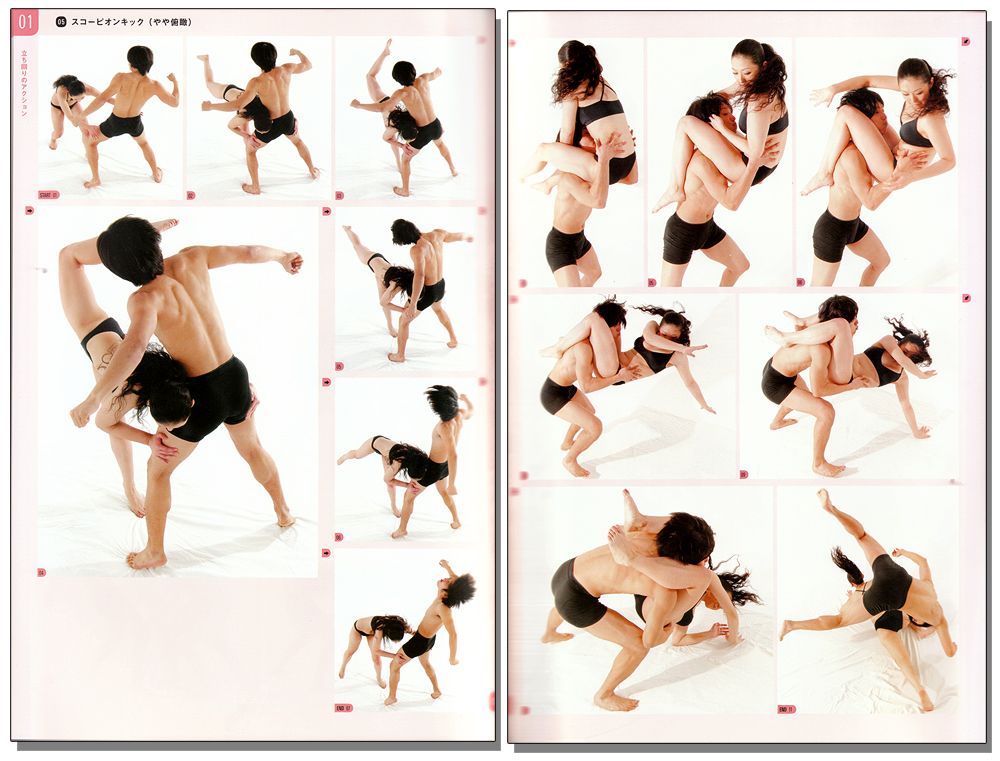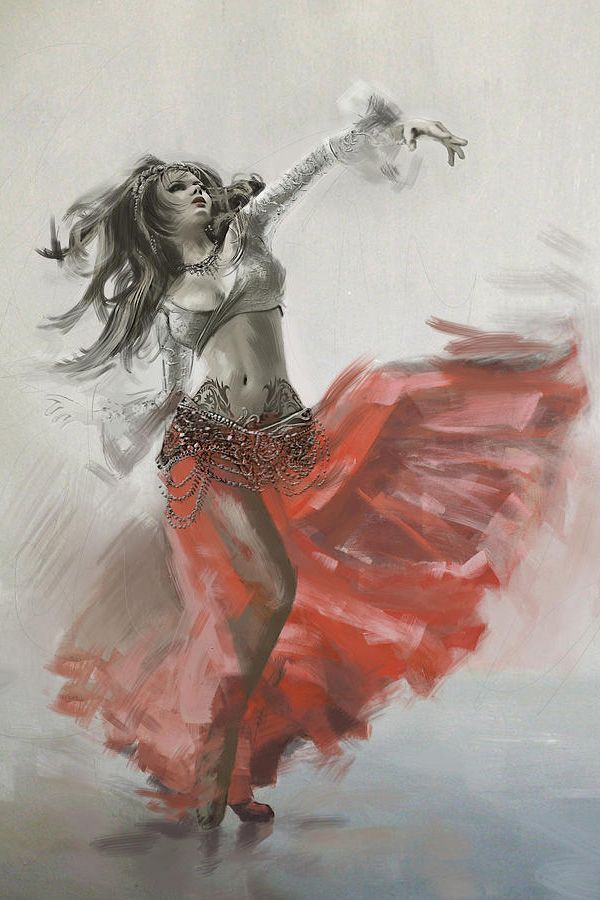How to stop sweaty hands pole dancing
The Ultimate Grip Guide for Pole Dancers
If you’ve been a pole dancer for more than five minutes, you’ll be aware that grip is something of great importance to polers, and a much-discussed topic in our community. There are so many types of grip aids available to assist with different grip problems that choosing the right ones for you can get confusing! In this article I’ll explain common grip issues and then troubleshoot them, as well as provide a detailed description of how to use a range of popular grips for best results.
And just a quick note – this article is independently written and not sponsored by or affiliated with any of the grip brands mentioned 🙂
Dry slip
Dry slip occurs when there is not enough moisture in the skin to provide the amount of traction and stick required to be able to grip the pole. Imagine trying to stick to the pole with a piece of dry paper covering all of your grip points – that’s basically what it feels like! It’s a common misconception that pole dancers shouldn’t EVER moisturise and that sweat and oil are the only things that can cause grip issues. However, dry slip is a very real and very common issue for many pole dancers!
Recommended grip aids/ methods
- Itac2
- Dew Point
- The Shaving Cream Method
- Pole Physics
Tips for people with Dry Skin
- Moisturise with an oil-free lotion before pole. For some people this can mean a few hours before pole, and for some it can mean the night before. Experiment to find out what works for you. Often lotions are safe as they tend to be water-based, whereas moisturising creams or butters are often oil based and may create an oily film on the skin, which we don’t want.
- Stay hydrated
- Warm up the pole before you get on it
- Warm up your body to encourage it to sweat a little
- Apply Dew Point or Itac2 as needed
- Use the Shaving Cream Method
Oily skin
Oily skin is not often spoken about among pole dancers as it’s commonly confused with being sweaty. Oily skin occurs when the sebaceous glands excrete too much sebum. Often people notice this on their faces, but it can affect other parts of the body such as the back and chest. Although the back and chest are rarely used as grip points on the pole, grip issues can arise from the transfer of oil onto the hands, other body parts, or the pole – thus causing you to slip. The other way your skin could become oily is if you are using an oil-based body cream or other beauty products and not washing them off well enough before hopping on the pole. And even if you are careful to only use your oil-based products on non-pole days AND you shower before pole, some people still find that when they start to sweat residual product gets pushed to the surface of the skin and the dreaded slip begins!
Often people notice this on their faces, but it can affect other parts of the body such as the back and chest. Although the back and chest are rarely used as grip points on the pole, grip issues can arise from the transfer of oil onto the hands, other body parts, or the pole – thus causing you to slip. The other way your skin could become oily is if you are using an oil-based body cream or other beauty products and not washing them off well enough before hopping on the pole. And even if you are careful to only use your oil-based products on non-pole days AND you shower before pole, some people still find that when they start to sweat residual product gets pushed to the surface of the skin and the dreaded slip begins!
Recommended grip aids/ methods
- Dry Hands
- Tite Grip II
- The Dish Soap Method
Tips for people with Oily Skin
- Always have a hand towel (or two) available to wipe your hands and body between tricks
- Shower before pole class
- Do not use oil based beauty products, especially on days you know you will be on the pole
- Regularly wipe the pole down with methylated spirits
- Wash hands with dishwashing soap before applying any grip
- Appy Dry Hands or Tite Grip II as needed
Sweating
Sweating is a natural bodily function that helps to regulate your body temperature. There are many reasons you might perspire, such as if you are exercising, feeling anxious, hot, or if you develop a fever. While it’s normal to sweat, it can be annoying for pole dancers who find themselves feeling too sweaty and slipping on the pole. Sweaty hands is actually the number one grip concern for pole dancers and most of us have experienced it at some point.
There are many reasons you might perspire, such as if you are exercising, feeling anxious, hot, or if you develop a fever. While it’s normal to sweat, it can be annoying for pole dancers who find themselves feeling too sweaty and slipping on the pole. Sweaty hands is actually the number one grip concern for pole dancers and most of us have experienced it at some point.
Recommended grip aids/ methods
- Dry Hands
- Tite Grip II
- The Dish Soap Method
Tips for people with Sweating
- Always have a hand towel (or two) available to wipe your hands and body between tricks
- Regularly wipe the pole down with methylated spirits
- Wash hands with dishwashing soap before applying any grip
- Use Tite Grip II on hands and feet
- Put Dry Hands directly on the pole
Hyperhidrosis
Hyperhidrosis is a condition that causes excessive perspiration. As a result, many people with hyperhidrosis will drip with sweat even when the circumstances don’t call for it, such as when they are relaxing in air conditioning or simply sitting at a desk working. This condition can be very frustrating for pole dancers because so much of what we do requires a reliable grip on the pole. Many polers with hyperhidrosis do find acceptable workarounds with grip aids, but please always check in with your doctor if you are concerned about excessive sweating – they might discuss treatments with you such as botox and iontophoresis depending on your individual needs.
This condition can be very frustrating for pole dancers because so much of what we do requires a reliable grip on the pole. Many polers with hyperhidrosis do find acceptable workarounds with grip aids, but please always check in with your doctor if you are concerned about excessive sweating – they might discuss treatments with you such as botox and iontophoresis depending on your individual needs.
Recommended Grip aids
- Tite Grip II
- Dry Hands
- Mueller Stickum Spray
- The Dish Soap Method
- Mighty Grip gloves and ankle grips
- Sticky leggings
Tips for people with Hyperhidrosis
- Always have a hand towel (or two) available to wipe your hands and body between tricks
- Regularly wipe the pole down with methylated spirits
- Wash hands with dishwashing soap before applying any grip
- Use Tite Grip II on hands and feet
- Put Dry Hands directly on the pole
- Invest in some good quality sticky leggings, gloves and foot grips
Cold Pole
A cold pole can make it difficult to grip. A couple of good ways to warm up the pole include to rub it up and down vigorously with a dry cloth and then hold the pole and do some walks, basic spins or simple grounded freestyle dancing. If you’re in a really cold area, some people use a hair dryer or heated blanket to help heat the pole up. But take care – if the room and the pole are seriously cold it can be hard for you to get warm enough to train safely.
A couple of good ways to warm up the pole include to rub it up and down vigorously with a dry cloth and then hold the pole and do some walks, basic spins or simple grounded freestyle dancing. If you’re in a really cold area, some people use a hair dryer or heated blanket to help heat the pole up. But take care – if the room and the pole are seriously cold it can be hard for you to get warm enough to train safely.
Lack of grip strength in the hands
An issue that’s common in beginner pole dancers is a lack of strength in the hands, i.e. simply not being able to hold on tight enough. The good news is that as you progress, your hands will naturally get stronger. This can take a little time, but practice and perseverance will get you there. It can help to learn to focus on holding a strong grip in movements that you currently slide out of. It sounds obvious to say, but many beginner students are surprised at the difference that actively focussing on a firm squeeze of the hands can make! And check in with your teacher to make sure your technique is correct. Sometimes a small change of position can eliminate grip struggles in certain movements. If you want to speed up the process you can also invest in a hand grip strengthener and incorporate some wrist and hand strengthening exercises into your training.
Sometimes a small change of position can eliminate grip struggles in certain movements. If you want to speed up the process you can also invest in a hand grip strengthener and incorporate some wrist and hand strengthening exercises into your training.
Popular grip aids
For hands:
- Dry Hands
- Girly Grip
- Koala Grip
- Enviro Grip
- Tite Grip II
- Mueller Stickum Spray
For Body:
- Itac2
- Dew Point
- Pole Physics
- Dancing Dust
- Sticky leggings
Dry hands
Dry Hands is the go-to grip for a large number of pole dancers as it is extremely versatile. Rub a pea-sized amount into your palms and wait to dry before getting on the pole. Dry Hands can be used on any part of the body that gets sweaty including hands, feet, inner thighs, and other grip points. Often people will apply directly to the pole.
Often people will apply directly to the pole.
Itac2
Itac2 is best used on the body, on parts that will come in contact with the pole. Avoid getting on your palms at all costs! If you do get it on your palms or fingers, make sure to wash them with soap after application. To apply Itac2, use the back of your hand or a cloth to rub a pea sized amount on your grip points, such as the inner thighs, knee and elbow pits and side of the tummy.
Tite Grip II
Tite Grip II is great for sweaty hands and feet. Simply rub a small amount into your palms and the bottom of your feet and wait until dry before getting on the pole. It is beneficial to do this 30 minutes before touching the pole as it is an antiperspirant for your hands and benefits from having some time to work before poling begins.
Dew Point
Dew Point is for people who experience dry slip. Spray all over the body as needed and wait until it is fully absorbed into the skin before getting on the pole. Do not spray onto the pole or directly onto your hands. If you do get it on your hands, make sure you wash them with soap and water.
Do not spray onto the pole or directly onto your hands. If you do get it on your hands, make sure you wash them with soap and water.
Pole Physics
Pole Physics is a revolutionary moisturiser specifically designed for the dry-skinned pole dancer. Simply apply to your entire body at least 2 hours before you plan on pole dancing (I would do it in the morning after showering, and some people like to apply it the night before pole) and enjoy the benefits of soft, hydrated, grippy skin!
Mueller Stickum Spray
Mueller Stickum Spray is a sticky adhesive designed for athletes such as rugby players to improve grip in wet conditions. It creates a tackiness which will improve grip even in wet conditions when applied directly to the hands and fingers. You only need to apply once per session as you can reactivate it by running your hands under cool water. To remove you will need to use a solvent such as Tuffner Remover Spray.
Grip MethodsThe Shaving Cream Method
The Shaving Cream Method was birthed by some of the earliest pole pioneers in Australia. The process involves simply rubbing shaving cream all over your grip points in order to stick to the pole better. The reason it works is that it moisturises the body and creates a touch of tackiness, without causing greasiness, to allow you to stick to the pole. The best shaving cream to use is the foaming varieties. PoleSphere instructors Miss Filly and Joanna Littlewood-Johnson recommend Gillette Men’s Foaming Shaving Cream. However, Lisa D finds that the shaving cream method makes her slimy and slippery, so it’s definitely a technique that needs testing to see if it suits your skin type!
The process involves simply rubbing shaving cream all over your grip points in order to stick to the pole better. The reason it works is that it moisturises the body and creates a touch of tackiness, without causing greasiness, to allow you to stick to the pole. The best shaving cream to use is the foaming varieties. PoleSphere instructors Miss Filly and Joanna Littlewood-Johnson recommend Gillette Men’s Foaming Shaving Cream. However, Lisa D finds that the shaving cream method makes her slimy and slippery, so it’s definitely a technique that needs testing to see if it suits your skin type!
The Dish Soap Method
The Dish Soap Method is pretty straightforward. All you need to do is wash your hands using dish soap in place of regular soap before applying any grip. The logic behind this method is that the dish soap gets rid of any excess oils and sweat that may be on your hands. Unlike normal hand soap, dish soap doesn’t contain any moisturising properties that could make your hands slippery, making it the perfect pre-pole hand washing solution!
So, in conclusion I’d say that if you’re finding yourself losing grip on the pole, never fear! There really is a solution for every Slippery Susan out there.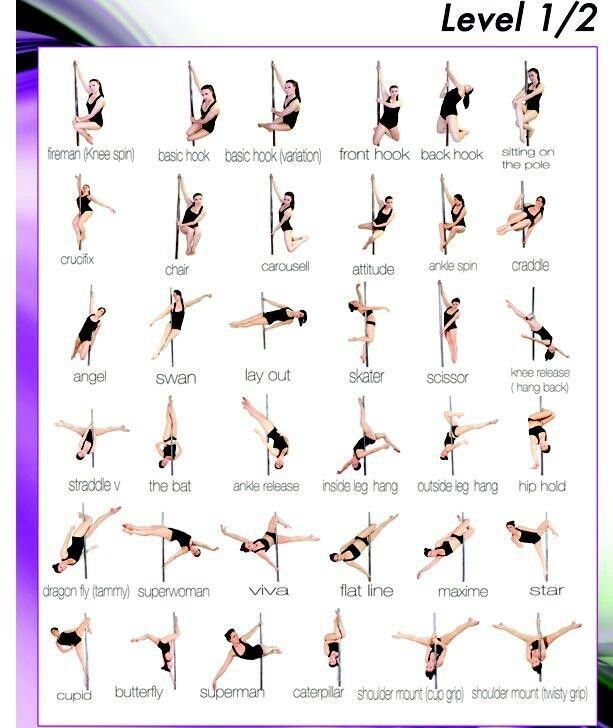 Use the above information to figure out firstly what is causing the slip, and then experiment with the various grip aids and methods to find what works best for you. Each person will usually find that their grip strategy or combination of strategies is different to every other person in their class, so don’t hesitate to mix and match methods until you find what gets you sticking to the pole with ease.
Use the above information to figure out firstly what is causing the slip, and then experiment with the various grip aids and methods to find what works best for you. Each person will usually find that their grip strategy or combination of strategies is different to every other person in their class, so don’t hesitate to mix and match methods until you find what gets you sticking to the pole with ease.
How to pole dance with sweaty hands?
May 24, 2022
10 min read for training
Last Updated on November 21, 2022 by Dancer leila liu
Do your hands sweat profusely?
If you have ever pole danced, you will know that grip is the most crucial aspect of pole dancing that determines your style.
However, dancing otherwise becomes a nightmare if you are constantly slipping into a sweaty heap at the foot of the pole.
I still remember my initial days of pole dance training. Having sweaty hands severely impacted my confidence on the pole as I was always scared of slipping down.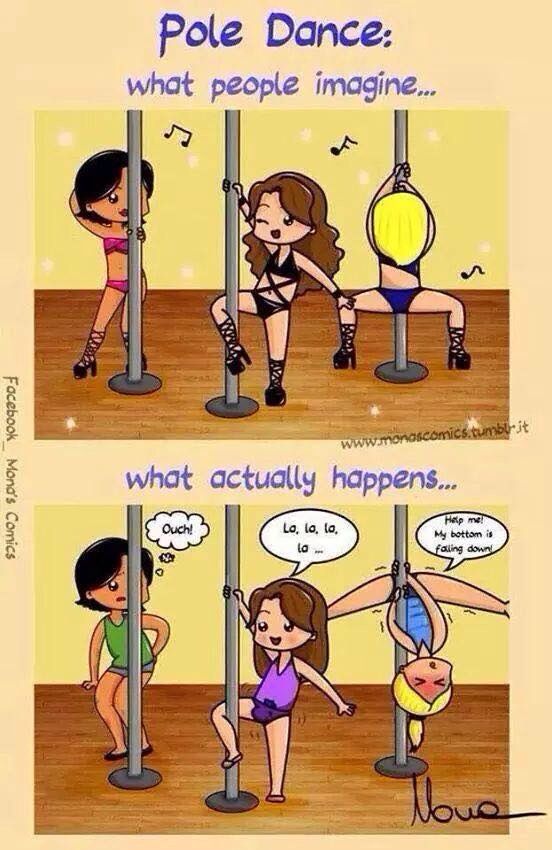
However, with years of experience, I’ve found the best secrets for how to deal with sweaty hands in a much better way.
Here is every tip we have learned over the years on how to pole dance with sweaty hands!
Can you pole dance if you have sweaty hands?
Pole dancing with your sweaty hands can be disastrous.
When new pole dancers keep sliding down the pole when trying to climb, we see that sometimes new dancers can get disheartened and may eventually give up pole dancing.
The fear of slipping down and the risks of accidents take away all your confidence while performing any type of spin on your dance pole.
Thanks to several grips aids available on the market, you can now hold onto your pole with much better ease.
Do beginners with anxieties get their hands more sweaty?
When I was a beginner, sometimes, just the sight of a pole activated my sweat glands. This is not indicative of a health problem.
Instead, the problem is simply the result of nervousness.
Anxiety prompts the body to respond to fear or threat by raising your body temperature [1].
To combat nervousness or anxiety, all you have to do is to have a go with the pole more often.
Consistently practice until you get comfortable and used to the pole. Sweating is more often psychological.
As you become more confident at pole dancing, you will notice that you sweat less and enjoy dancing more.
As you improve, your wall also becomes more confident.
What is hyperhidrosis, and how does this affect your pole dance performance?
Sometimes, that profuse sweating could be a sign to get yourself checked. But before you rush to the doctor, ask yourself these questions:
- Do you sweat even when the weather is cool?
- Do you sweat even when you are relaxing with the air conditioning on?
- Do you find yourself sweating for no apparent reason?
If the answer to all these is a neurotic yes, don’t be alarmed.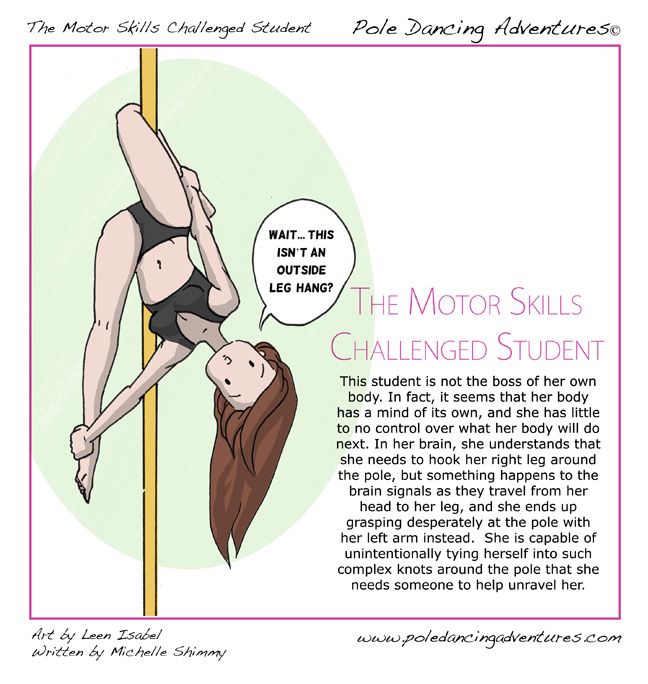
This is a fairly common condition known as hyperhidrosis. This involves excessive sweating on the feet, palms, face, and underarms [2].
This is brought on regardless of temperature, exercise, or mental state.
Hyperhidrosis can be particularly frustrating for pole dancers as most of our dance moves require a firm grip on the pole.
Sweaty palms impede us from a steady grip.
Meanwhile, the following tips can work wonders to keep you on the pole
- Always have a towel (or two) handy to wipe your body and the pole.
- Wipe the pole down with methylated spirits.
- Put the Dry Hands solution directly on the pole.
- Wash your hands with dishwashing soap before applying any grip products.
- Apply Tite Grip II on hands and feet.
- Wear good quality sticky leggings, gloves, and foot grips.
- Inject Botox into your palms.

Sometimes the pole condition results in a bad grip
Choosing the right pole is just as crucial as getting your leg technique right.
Also, believe it or not, the weather plays a role too in deciding whether you will stick or slip.
Here’s why your dancing pole can be slippery.
A. Pole dancing in a cold climate
The combination of cold weather, freezing poles, and the bare skin of the pole dancer is a recipe for disaster. In the winter, our hands dry up, making it difficult to maintain a strong grip.
A warm blanket rubbed against the pole is a practical solution. You may also use a hairdryer on the pole. However, take care not to overheat the pole.
B. Pole texture and finishing
Poles are made of different materials like brass, titanium, chrome, or steel. These materials have their own texture, which affects a dancer’s performance and grip.
Chrome is the most popular choice, owing to a lower-cost affordable option. Chrome poles, however, have a poor grip and are less secure.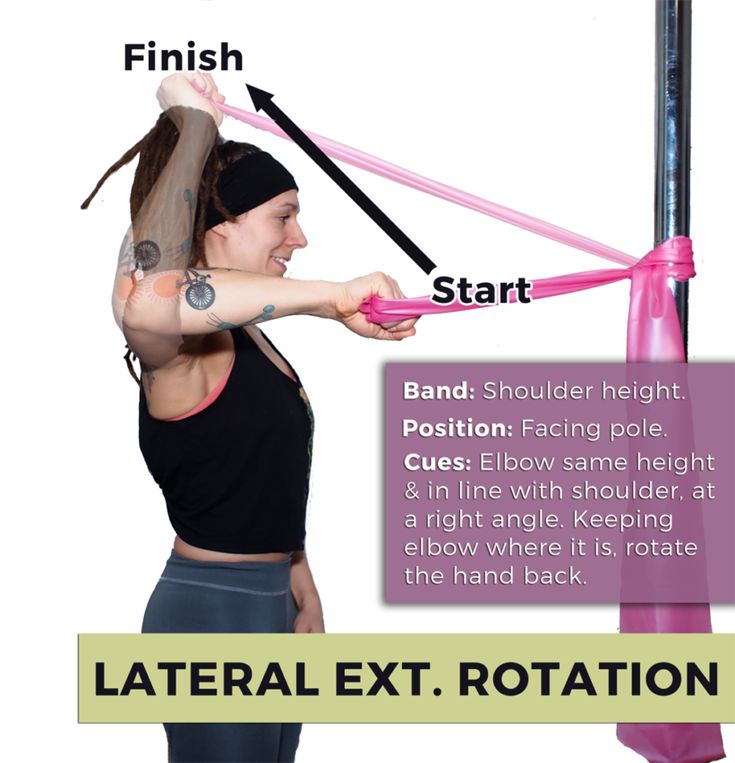
The same is the case for titanium. Steel poles, on the other hand, provide a better grip, while brass poles provide the best grip.
If you tend to sweat a lot, brass could be your best bet. However, the brass pole range is more expensive. If cost is your concern, stainless steelwork is the best alternative.
Steel gives you a decent grip and also allows you to spin well. A lot of polers find steel more durable than titanium or chrome.
C. Pole diameter
Poles come in a variety of sizes, defined by their diameter. Women with small hands may find it difficult to wrap their fingers around a 50 mm pole. Size matters for finding a tight grip.
Wrap your fingers around the pole to see which one fits the best.
If you feel like you are getting a good, solid grip, that’s the pole for you. Choose a larger size if your fingers overlap your thumb, as smaller poles are more difficult to grab with your legs.
Spinning is difficult with dance poles that are too thin.
What can you do to keep your hands from getting sweaty?
1. Avoid applying lotion, oil, conditioners, or moisturizers.
This is a no-brainer. Do not use oil-based products, particularly on days when you will be poling.
You don’t want to add to the clamminess of your palms by moisturizing before pole dancing.
Ingredients in these lotions may clog your pores. And your sweat glands will go into overdrive as a result of this.
2. Use grip aid or grip-enhancing products.
Purchase a decent grip aid. There are several options available online we have found.
- Tite Grip II
- Dry Hands
- Mueller Stickum Spray
- Mighty Grip Gloves
I would also recommend washing your hands with dishwashing soap before hitting the pole.
Explore the options to see which one works best for you.
3. Use antiperspirants.
We often associate antiperspirants with underarm sweating.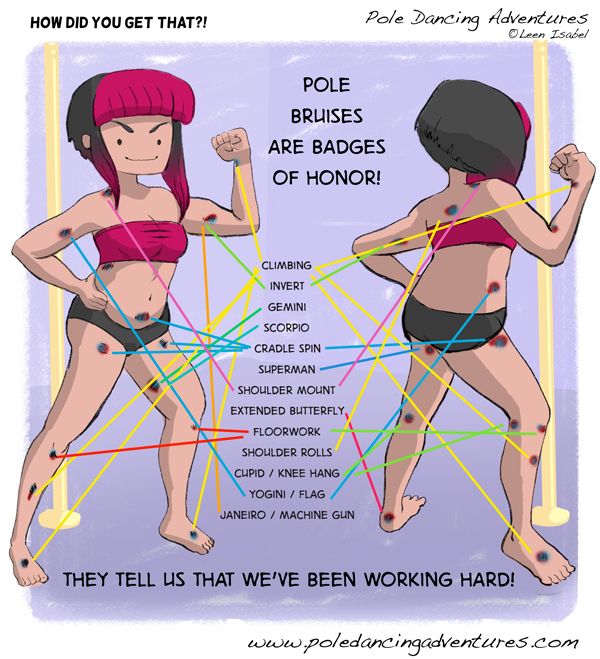
But these are effective in stopping perspiration in other parts of the body, too, including your palms.
Simply apply antiperspirant to your palms to reduce clamminess.
Pro Tip:
Apply antiperspirant at night to allow your hands more time for better absorption.
If you don’t get the desired result, switch to a clinical-strength antiperspirant.
4. Keep good health and hygiene.
Did you know that food habits impact sweating? Certain foods trigger sweating.
Make these changes in your dietary habits to control sweating:
- Avoid caffeine, alcohol, spicy, fried, and processed foods. These foods raise your body temperature, which activates your sweat glands.
- Consume plenty of fruits and vegetables. Natural foods contain a lot of clean water, which helps to keep your body temperature in check.
- Switch to skim milk and olive oil.
- Make sure you have enough vitamin B and vitamin D in your diet.
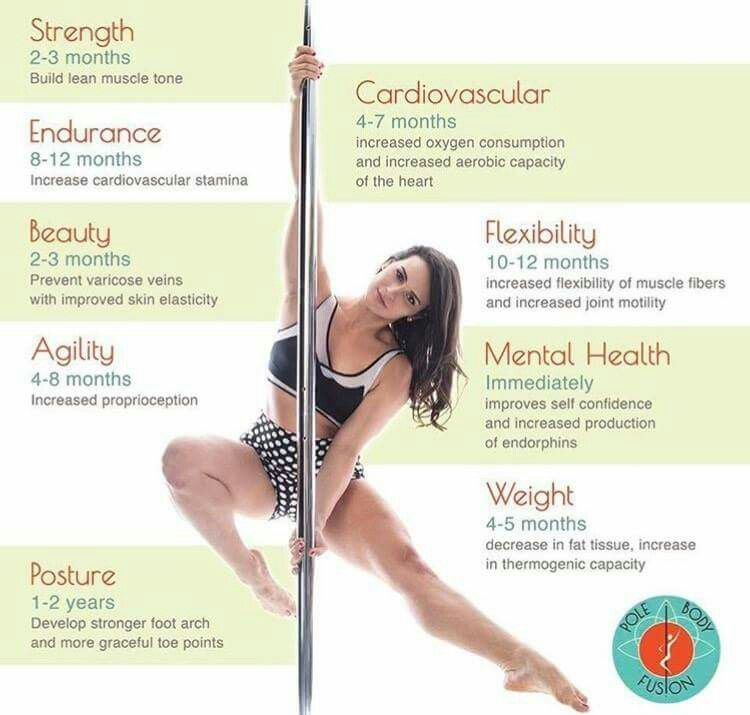
5. Keep your pole clean.
During practice, we unconsciously add grease, filth, and sweat to the pole.
The products we use on our hands and bodies leave a residue on the pole as well. This makes the pole slick, too slick.
To avoid accidents and improve your grip, clean the pole before you start practicing.
You should also clean the pole at the end of each session.
How can you keep the pole from getting too slippery?
New poles are usually slippery, especially those with chrome plating.
Make sure you have a crash mat on hand for those unavoidable slips.
You can try out these tricks to make the pole less slippery.
- Use grip aids on the dance pole. These grip aids become sticky after reacting with your body heat. So, the more you practice, the stickier the pole becomes.
- If the weather is cool, dance poles will become more slippery. Plugin your hairdryer to heat the pole. You can also rub a blanket on the pole surface or heat your room.
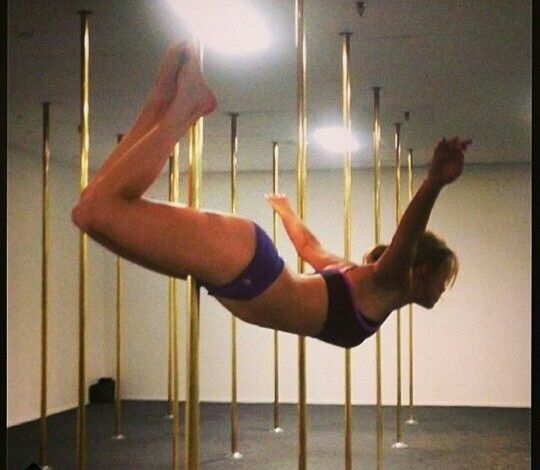
- Clean your pole with spirits or a vinegar-water solution. You can spray these on the pole before your fitness session.
- Poles become stickier over time. With consistent usage, the pole will become less slippery eventually.
- Lastly, practice more to improve your core strength for better stability and directly work out your hands.
What can you do to strengthen your grip?
While spinning on the pole, a strong grip keeps you balanced.
Unless you are a weight lifter, you will realize that you do not have a high level of grip strength when you first start out.
You can, however, work out and dance to improve your grip strength.
- Squeeze grippers. These will improve the strength and endurance of your forearms. To sustain your body weight on the pole, you’ll need strong hands.
- Suspend yourself from a bar to strengthen your arms and upper body.
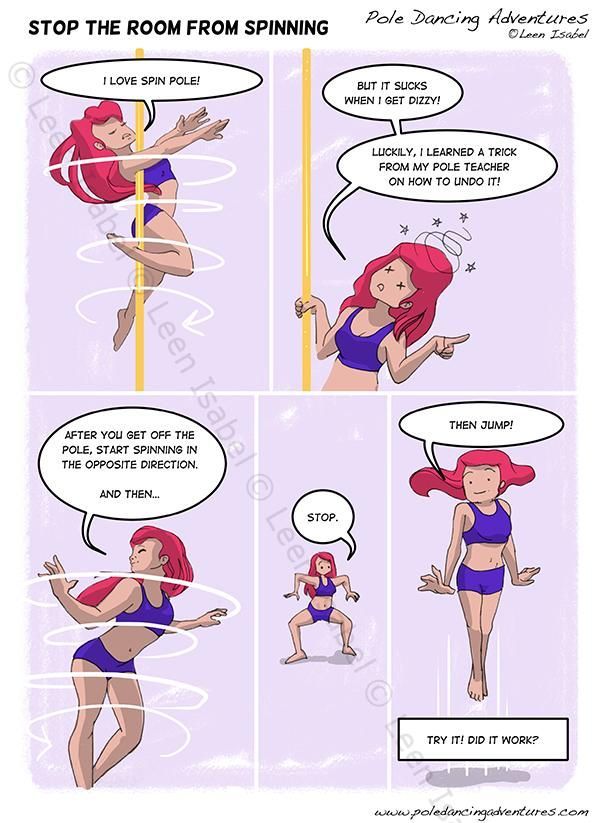 Suspending will also give you something called a “Cup Grip,” which is commonly used in floorwork, power spins, and on-the-pole dance techniques.
Suspending will also give you something called a “Cup Grip,” which is commonly used in floorwork, power spins, and on-the-pole dance techniques. - Wrap a rubber band around your fingertips. Stretch your fingers wide and then tighten your hands. This exercise works on your finger strength.
Remember to warm up before doing these exercises.
Night-time routine for sweaty hands
1. Baking soda
Using baking soda is an excellent way of treating sweaty glands. The alkaline properties of baking soda can reduce sweating.
Mix 2-3 tablespoons of baking soda in warm water and dip your palms in the solution for 5 minutes. Inside the water, rub your palms together.
2. Apple cider vinegar
Apple cider vinegar balances your body’s pH levels. This helps to keep your palms dry.
Wipe your palms with apple cider vinegar before going to bed. There is no need to rinse the solution off.
You should also consume apple cider vinegar on a regular basis.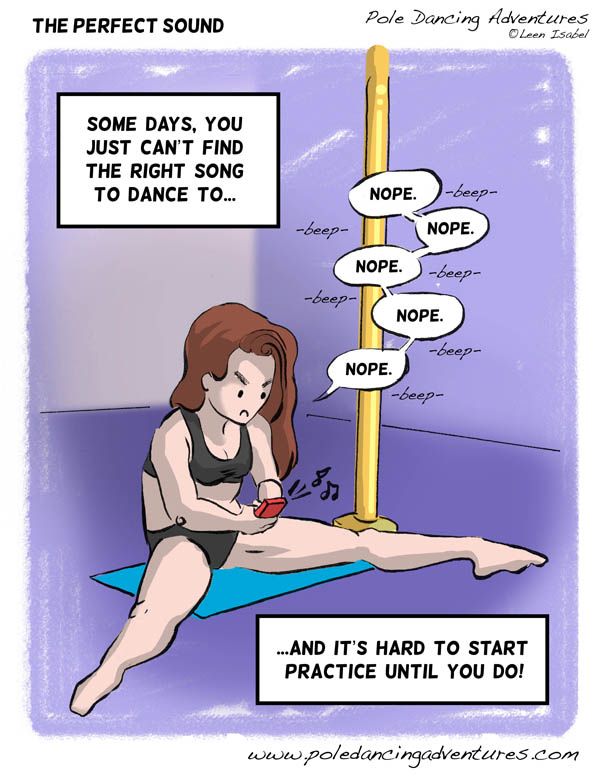 2 tablespoons of water should suffice.
2 tablespoons of water should suffice.
3. Antiperspirants
Antiperspirants applied before bedtime will give you sweat-free hands the next day. This product gives your body the signal to cease sweating.
Depending on the severity of your hyperhidrosis, you can use a regular or clinical-strength antiperspirant.
4. Sandalwood powder
Applying sandalwood powder is an ancient remedy to treat sweaty hands and feet. You can use the same technique on your palms to keep sweat at bay.
Sandalwood also provides immediate cooling.
Mix sandalwood powder with water or rosewater. Apply the mixture to the palms. Allow the paste to dry. You can rinse off the paste in the morning.
Preparing your sweaty hands before getting onto the pole
Before hitting the pole, you can take the following steps:
- Apply antiperspirant to your palms. Allow the solution a minute or two after application to absorb fully into the skin.
- Drink lots of water.
 Water controls your body temperature and keeps you cool. More moisture in means less moisture out.
Water controls your body temperature and keeps you cool. More moisture in means less moisture out. - Wash your hands frequently to keep your palms and fingers clean. Use dish soap instead of a hand wash to ensure your hands are suitably dry. Unlike hand washing, dish soap doesn’t have moisturizing properties. Dry your hands thoroughly with a towel afterward.
- Keep a cotton towel or cotton balls handy to remove clamminess. Cotton is the best material for absorbing moisture.
- Wipe your hands with an alcohol-based sanitizer or alcohol wipes. Alcohol causes sweat to evaporate while tightening sweat pores.
Caring for sweaty hands after a pole dance routine
Sweaty hands can be embarrassing outside of the pole studio as well. Even when you aren’t training, I recommend using antiperspirants.
For prolonged relief, look for antiperspirants that contain aluminum chloride.
You can even choose to treat your sweaty palms with Botox injections if you are really concerned.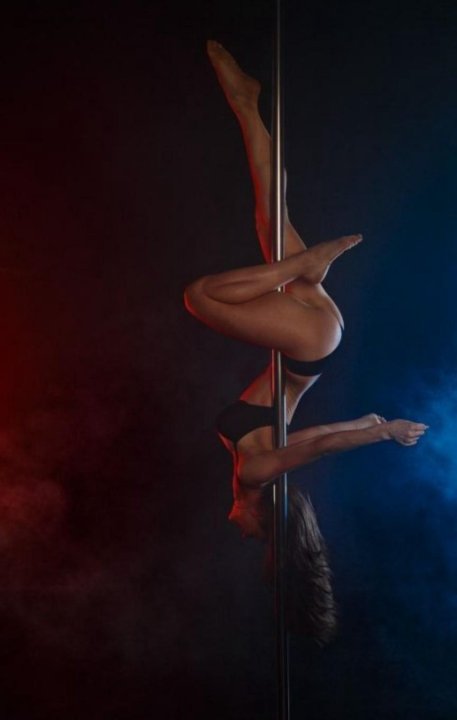 This gives you sweat-free palms for a few months.
This gives you sweat-free palms for a few months.
Some dermatologists even use low electric current to stop the sweat glands.
This is, once again, a temporary solution and doesn’t compare to improving your real fitness levels in a studio or on a dance pole from practice.
You can make the following lifestyle adjustments:
- Shower daily. However, avoid saunas, and hot showers, as hot environments can increase the body’s temperature and reduce your grip.
- Avoid caffeine, and spicy food, as to much spice can overstimulate the sweat glands.
- Wear loose-fitting clothes made of natural fibers. This will allow your skin to breathe and absorb moisture better.
- Use relaxation techniques like meditation and deep breathing to control stress. No stress, no sweat.
A small reminder
Sweat is the result of bodily function. Simply identify what causes excessive sweating and control those triggers. There is no one-size-fits-all solution.
There is no one-size-fits-all solution.
However, the best way to manage sweaty hands in a workout is to use grip aids before you begin your pole dance sessions.
Don’t let a little sweat get in the way of your pole dancing dreams.
And don’t forget to eat plenty of raw basil in your meals, as this herb can help reduce anxiety, reduce sweat and make you smell fresh during a heavy workout session.
More information:
- “Anxiety, Stress, and Hyperhidrosis,” a publication from https://www.healthline.com/health/diagnosing-hyperhidrosis/depression-and-anxiety
- “Hyperhidrosis, symptoms and causes,” an article from https://www.mayoclinic.org/diseases-conditions/hyperhidrosis/symptoms-causes/syc-20367152
Leila Liú
My name is Leila Liu, as a pole dancer and a pole dancing fitness coach, I bring my experience, technique and style to my followers. As pole dancing is becoming more popular, this is also my favorite style of dance to teach.
| home › News Published: 10/12/2016 Pole training! If you have just started exercising, then wet palms are quite normal, the first 2-3 sessions excessive sweating is normal. Here they influence - excitement, unaccustomed skin, new elements. As the parts are mastered, the skin will get used to it and on the already learned elements it will stop sweating like that - but in the next, when learning each new element, the palms will sweat again. Should I wear gloves on the pole? What kind of gloves should I wear? A leather (rubberized) gloves - stick a little less than varnish. Leather gloves require a bit more force to hold on to, but they can be used to slide smoothly down the pylon as needed. That's why they are leather, which imitate human skin, except that they do not sweat))) Each type of gloves has both pros and cons. If you are learning twists on the static pole, then during the twists, a smooth sliding down the pole is provided (the pole stands still, and the hand slides around the pole in a spiral, or just slides down smoothly). If you are learning twists on the spinning pylon, which do not involve slipping down, then latex gloves will also hold perfectly, even better than leather ones. But still, most of the twists provide for sliding along the pylon - therefore, leather-coated gloves will still be good for learning twists. If you are learning elements in the upper part of the pole , where only interceptions are provided, without slipping, then both latex and leather gloves are suitable. Latex ones provide the best grip, but can be unsafe if slipped. My recommendation – if you decide to use gloves on the pole, then it is better to opt for leather ones – they are more versatile, suitable for any type of pole, and better imitate the skin of the palms. Where can I buy these gloves? And great news! Good fortune to you in mastering Pole-dance!!! Let nothing prevent you from mastering this pleasant, necessary and indescribably beautiful dance-Pole-Dance))) Your School of Beautiful Dancing "Sixth Self" :) Pole Dance - pole dance. Part 2 Twist (pylon) |
6 ways to fight sweaty palms.
This entry was posted by Pole-dance - all about pole dance and pole dance: music, videos, lessons. You can leave comments here or here.
How to deal with wet hands is regularly asked on the pages of this portal. The problem, indeed, is relevant and almost all those involved face it: someone, when learning a new element, someone, when he is worried before a performance, and for someone, this is their individual feature and the body's reaction to stress. There is one way to deal with this trouble, let's try to talk about them today.
6 ways to deal with sweaty palms
1. Learn to relax and don't focus on stress.
Are you nervous and your palms sweat? Take a deep breath in and out, focus on your breath, relax. This is a very simple tip that works very well. Inhale through your nose, hold your breath slightly, exhale through your mouth, concentrate on your sensations, feel how the body is filled with energy and start performing the element again. You will notice that your palms sweat a lot less. The ability to control your body and negotiate with it is a very important ability of any pole dancer.
Inhale through your nose, hold your breath slightly, exhale through your mouth, concentrate on your sensations, feel how the body is filled with energy and start performing the element again. You will notice that your palms sweat a lot less. The ability to control your body and negotiate with it is a very important ability of any pole dancer.
2. Take a break.
Often palms sweat when learning new dance elements. Starting to sweat and slip? Take a break, do something else, and then return to doing this element. It will also be useful to mix the attachment elements for the pole with the help of palms and hands and legs and popliteal cavities. Perform the elements one by one and mix familiar with unfamiliar and, you will see, you will sweat less and dance better!
3. Improve your skills.
As they say, everything comes with experience. Pole dancing is no exception. Remember yourself in the first lessons, when just from the thought that you need to go to the pole and climb it, your palms were sweating. Are you reacting like this now? Most likely not. As you learn more new elements, your excitement will decrease, and your self-confidence, on the contrary, will only grow, and your palms and other parts of the body, respectively, will sweat less and give less excitement. Thus, the advice is simple and clear: train more and develop like a pole dancer.
Are you reacting like this now? Most likely not. As you learn more new elements, your excitement will decrease, and your self-confidence, on the contrary, will only grow, and your palms and other parts of the body, respectively, will sweat less and give less excitement. Thus, the advice is simple and clear: train more and develop like a pole dancer.
4. Do not moisturize the skin.
This advice seems banal at first glance, but not everything is so simple. Many people simply forget about it. Moisturizing the skin of the hands with cream or body lotion is a daily procedure that few people pay attention to. On training days, it is better not to use moisturizing and nourishing hand and skin creams, or to take a shower with shower gel or soap immediately before training. This will make your dance life much easier. The same applies to sunscreens. Few people know that they also have a fatty base and create an additional sliding layer and cause sweating of the hands and other parts of the body.
how not to slip on the pole
5. Keep the pole clean
This rule must also not be neglected. A clean pole itself reduces slipperiness and increases friction, the body slips less and sticks to the pole better. A dirty pylon causes psychological dislike, this makes the body sweat even more, therefore, as it is often said, cleanliness is the key to health. Clean pole - less sweating, successful dance or dance sequence.
6. Use a pole grip.
We have already written that they should not be abused, however, there are a large number of means and everyone can choose something to their liking, therefore, for the first time, at the time of learning new elements or performances, and also if your palms and other areas bodies sweat a lot, it makes sense to use them. Means of coupling with the pylon should not be neglected.
Several useful and interesting articles have already been written and published on pylon traction.
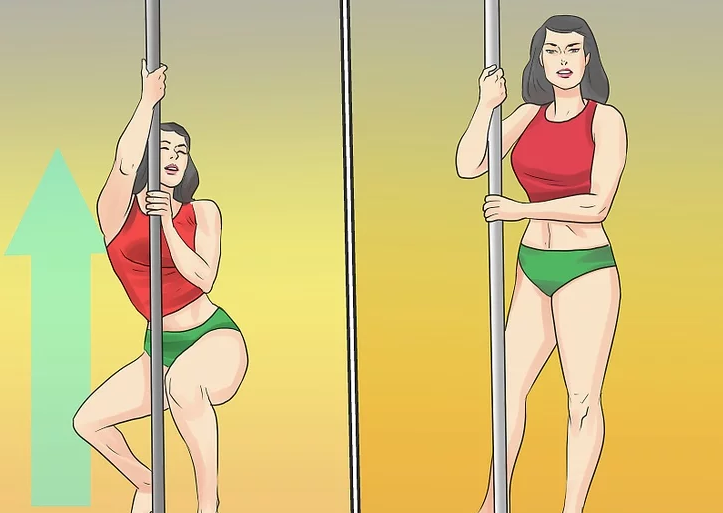 For some, this zone is the palms, for some, the feet, for some, the armpits. If your palms were sweating even before pole practice, then there is a big possibility that the skin of your palms will not get used to the pole, or it will take a very long time to get used to it , which will greatly interfere with your development in pole-dance - after all, there is no grip on the pole on wet hands, and doing something is unrealistic.
For some, this zone is the palms, for some, the feet, for some, the armpits. If your palms were sweating even before pole practice, then there is a big possibility that the skin of your palms will not get used to the pole, or it will take a very long time to get used to it , which will greatly interfere with your development in pole-dance - after all, there is no grip on the pole on wet hands, and doing something is unrealistic. 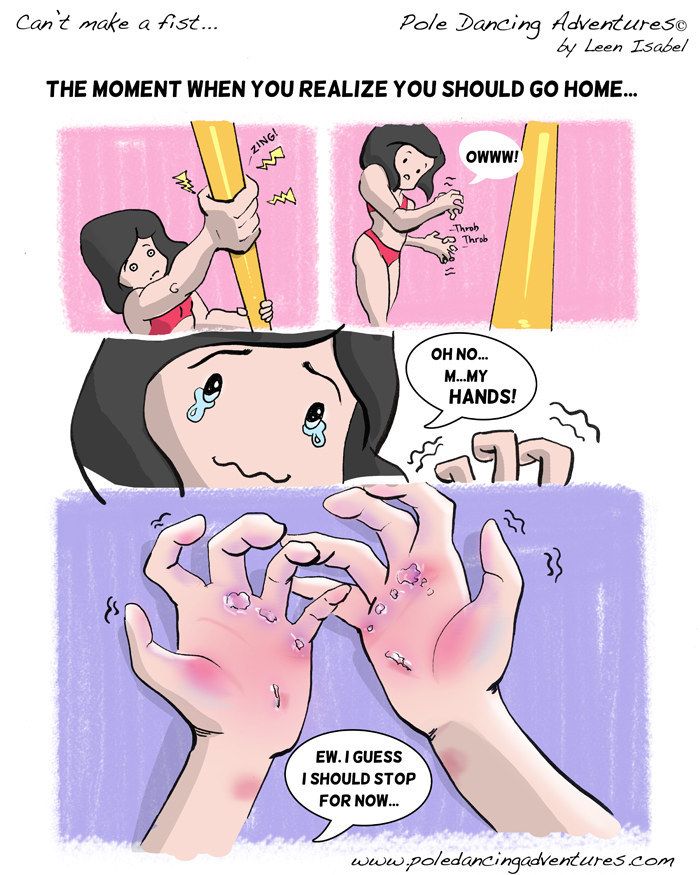
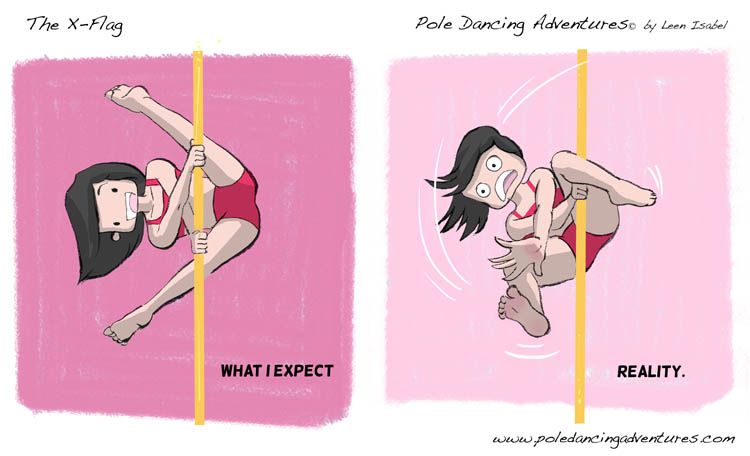 In this case, leather-coated gloves will be perfect.
In this case, leather-coated gloves will be perfect.  There are many types of gloves on the market that will not provide adequate grip.
There are many types of gloves on the market that will not provide adequate grip. 